The fire service stands as a vital cornerstone of community safety, and the demanding training necessary for firefighter certification is widely esteemed. At the heart of this training regimen lies the Candidate Physical Ability Test (CPAT), a crucial evaluation of aspiring firefighters’ physical prowess. In an era where competition is intense and the significance of firefighter readiness cannot be overstated, thorough understanding and preparation for the CPAT are paramount. This detailed handbook is crafted specifically for those ready to tackle the task head-on, offering valuable insights, guidance, and a systematic approach to mastering the CPAT examination.
Understanding the CPAT Test: An Overview
What is the cpat test ?
The CPAT test is a standardized physical exam designed to simulate the critical tasks associated with firefighting. Administered in a controlled environment, the test includes eight arduous events that reflect the demands of real-world fire rescue operations. Candidates are required to wear a 50-pound vest to mimic the weight of firefighting gear and must complete tasks such as hose dragging, equipment carrying, and victim rescue under a demanding time limit. The purpose of the CPAT is to ensure that all firefighter candidates possess the necessary physical ability to perform essential job functions safely and effectively.
The CPAT is a physically demanding test designed to emulate the rigorous tasks that firefighters might face on the job. From lifting heavy equipment to navigating through confined spaces, the test evaluates various skill sets to determine an applicant’s readiness. The test consists of eight separate events:
Stair Climb
In this event, candidates must ascend and descend a specified number of steps using a step mill. The event mimics the act of climbing high-rise buildings, an essential firefighter task.
Hose Drag
The hose drag requires candidates to advance a charged hoseline a predetermined distance through various obstacles. This simulates pulling or dragging heavy, charged hoselines to suppress fires.
Equipment Carry
During this section, candidates must pick up and carry various pieces of equipment from one point to another. The test highlights the need for structural and equipment familiarization.
Ladder Raise and Extension
Candidates must properly place an extension ladder and raise it to a fully vertical position. This is a crucial skill when it comes to accessing elevated points during a fire emergency.
Forcible Entry
This event measures a candidate’s ability to use tools to break through a wall or door. This simulation ensures that candidates can quickly gain access to structures in various emergency scenarios.
Search
Candidates navigate through a darkened maze to locate and rescue a dummy. This event assesses a candidate’s agility, coordination, and ability to work in confined spaces.
Rescue
In the final event, candidates drag a dummy a specified distance to simulate the rescue of an incapacitated victim. This is a physically demanding event that tests strength and endurance under stress.
Ceiling Breach and Pull
This event evaluates the candidate’s ability to pull a ceiling breach prop, simulating accessing a roof for ventilation or upper-level access.
Preparing for the CPAT: A Strategic Approach
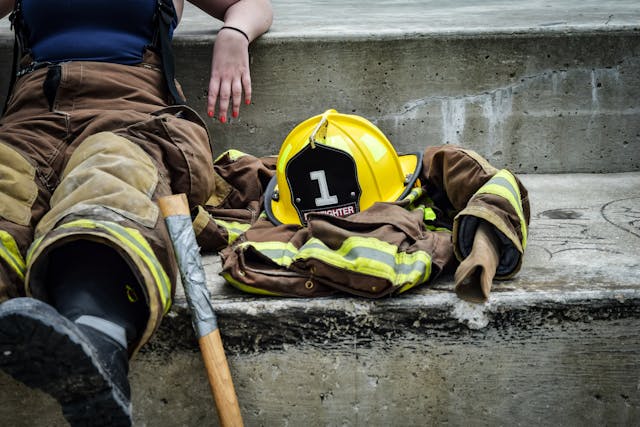
Preparation for the CPAT is a multi-faceted endeavor that includes physical conditioning, strategy building, and mental preparation. It is not simply about passing but about excelling and showcasing your readiness for the rigors of firefighting. Here is a step-by-step approach to readying yourself for the challenge.
Step 1: Understand the Physical Demands
Begin by understanding the physical demands of firefighting, which the CPAT seeks to emulate. Awareness of the test’s events will guide your preparation and ensure you tailor your workouts appropriately.
Step 2: Assess Your Fitness Level
Conduct a self-assessment of your current fitness level. Note areas of strength and areas that require improvement. This will help you set realistic goals and track progress.
Step 3: Start Your Training Plan
Develop a comprehensive training plan that focuses on increasing your cardiovascular endurance, strength, and flexibility. Include workouts that simulate the CPAT events and gradually increase intensity over time.
Cardiovascular Endurance
Cardio is vital for the continuous and sustained power needed to complete the CPAT test. Focus on activities like running, cycling, and using a stair climber to increase your endurance level.
Strength Training
Strength is essential for tasks like equipment carry and ladder extension. Incorporate weightlifting, calisthenics, and functional training into your routine to build the necessary strength.
Flexibility and Technique
Maintaining flexibility is key for injury prevention and overall performance. Work on proper technique for each event to optimize your movements and conserve energy.
Step 4: Include Rest and Recovery
Rest days are as crucial as training days. They allow your body to recover and repair, ultimately leading to better performance on test day.
Step 5: Familiarize Yourself with CPAT Gear
Use the same or similar gear you will use on test day during your preparation. Familiarity with the equipment will reduce any anxiety related to handling it during the test.
Step 6: Simulate the Test Conditions
Incorporate simulations of the CPAT test into your training. Set up an obstacle course that mimics the test, and time yourself to ensure you can complete it within the required limits.
Step 7: Mental Preparation
The CPAT is not just about a physical trial—it’s also a mental one. Practice visualization, stress management, and technique under pressure to simulate test conditions as accurately as possible.
Strategies for Tackling Each CPAT Event
Each CPAT event presents its own challenges, and having strategies and techniques for each will give you a significant advantage. Let’s delve into some tips for tackling each segment.
Stair Climb
Focus on maintaining a steady pace without burning out. Use the handrails for support and consider using a weight vest during training to simulate the added weight of firefighter gear.
Hose Drag
Employ the best technique for pulling the hose—bend at the knees, use your legs, and keep your back straight. Work on quick, powerful pulls to expedite the process.
Equipment Carry
Practice lifting weights to increase your upper and lower body strength. When carrying the equipment, keep a tight grip and be aware of your surroundings to avoid knocking into obstacles.
Ladder Raise and Extension
This event requires both strength and proper technique. Use the leg muscles to start the lift, then transition to the upper body. Keep your core engaged and your back straight.
Forcible Entry
Learn the best tool techniques from experienced firefighters. Practice efficiency and power to make quick work of the forcible entry.
Search
Develop a system to navigate the maze that works for you, and practice it consistently. Use the walls for guidance and maintain three points of contact at all times.
Rescue
When dragging the dummy, use your leg muscles to pull and maintain a steady rhythm. Lean into the drag and keep the dummy close to your body to reduce strain.
Ceiling Breach and Pull
For the ceiling breach, use your dominant arm to pull down, and use your body weight to apply pressure. For the pull, employ a hand-over-hand technique with minimal slack in the rope.
The Top Mistakes to Avoid
Understanding potential pitfalls can prevent you from falling victim to them. Here are common mistakes to avoid during your CPAT preparation:
Neglecting Proper Nutrition
Your body is your most crucial tool; fuel it with a balanced, nutritious diet to ensure it has the energy and resources to excel in training.
Skimping on Sleep
Adequate rest is essential for recovery and mental sharpness. Prioritize your sleep to support your training efforts fully.
Focusing Only on Cardio
While cardiovascular training is vital, neglecting strength and flexibility can leave you vulnerable in certain CPAT events. Balance your training regimen accordingly.
Overtraining
Pushing too hard for too long without proper recovery can lead to burnout or injuries. Listen to your body and adapt your training as needed.
Neglecting Mental Preparation
The physical aspect of the CPAT is demanding, but the mental component is just as important. Practice under different stress levels to prepare for test day anxiety.
Incorporating CPAT-Specific Exercises into Your Workouts
To simulate the CPAT, your workouts should include exercises that directly mirror its demands. Here are specific exercises for each event:
Stair Climb
Incorporate stepmill workouts or focus on stair runs in your training. High-intensity interval training on stairs can also improve your cardio and mimics the CPAT stair climb.
Hose Drag
Use sled pulls or heavy rope workouts to simulate the hose drag. These exercises focus on the same muscles and movements required for this event.
Equipment Carry
Farmer’s walks and weighted carries can help prepare you for the equipment carry. Use a combination of heavy equipment and agility work to build the required strength and coordination.
Ladder Raise and Extension
Practice with an actual ladder or use resistance band exercises that replicate the motion of raising and extending a ladder.
Forcible Entry
Sledgehammer workouts or tire flips can build the required strength and power for forcible entry. Be sure to maintain proper technique to avoid injury.
Search
Spider crawls and bear crawls are excellent for practicing the movements needed during a search. Incorporate them into your training to improve agility and stability.
Rescue
Work on your dragging technique with sled drags or dummy drags. Use a combination of back, leg, and core exercises to strengthen the muscles needed for this event.
Ceiling Breach and Pull
Incorporate dead hangs and pull-up variations to improve upper body strength for the ceiling breach and pull event.
Joining a CPAT Training Program
If you prefer a structured approach to CPAT preparation, consider joining a CPAT training program. These programs are often run by seasoned firefighters or certified trainers and provide a focused and supportive environment for your preparation.
What to Look for in a CPAT Training Program
When choosing a training program, look for the following:
- Experienced instructors with a background in firefighting or fitness training
- A comprehensive curriculum that covers each event of the CPAT
- Programs that tailor workouts to individuals’ current fitness levels and goals
- Opportunities to practice the CPAT in a simulated test environment
The Benefits of Joining a CPAT Training Program
Joining a program can offer several advantages, such as:
- Access to professional guidance and mentorship
- Accountability and motivation through a group setting
- Assistance in developing a personalized training program
- Opportunity to train on equipment identical to that used during the CPAT
Strategies to Successfully Pass the CPAT
The Candidate Physical Ability Test (CPAT) challenges firefighter candidates to perform a series of events that mimic real-life job tasks. Passing the CPAT requires a balance of strength, stamina, agility, and technique. To increase your chances of success, follow these critical strategies:
- Maintain Consistent Physical Training: Build upon your strength, endurance, and flexibility consistently. Cross-training is essential to prepare for the varied demands of CPAT events.
- Perfect Your Techniques: Technique is as critical as physical strength. Spend time with certified trainers or experienced firefighters to learn the most efficient ways to complete each event.
- Simulate Test Conditions: Train under conditions that replicate the test environment, such as wearing a weighted vest to mimic the heft of firefighter gear.
- Manage Your Diet and Recovery: Nutrient-rich foods and ample rest are pivotal for peak physical performance. Pay close attention to your body’s needs for recovery nutrition and adequate sleep.
- Mental Resilience: Prepare psychologically for the stress and urgency of the test environment. Visualization and stress-management techniques can be invaluable tools.
- Mock Tests: Regularly performing mock CPATs will familiarize you with the test flow and improve your ability to manage time and effort during the actual test.
By incorporating these strategies into your preparation, you will be well-equipped to tackle the CPAT and launch your career as a firefighter.
CPAT Test Stair Climb – Mastering the First Hurdle
The CPAT stair climb is designed to assess a candidate’s endurance and lower body strength, two crucial factors in firefighting. It’s often the first event and sets the tone for the remaining challenges. To prepare for this task:
- Increase Endurance: Gradually extend the duration of your stair climbing workouts. Consistency is key to building both strength and endurance.
- Practice with Weight: Train with a weighted vest to simulate the additional load of firefighting gear. This not only builds strength but also acclimates you to the sensation of climbing under weight.
- Focus on Form: Proper form maximizes efficiency and minimizes the risk of injury. Keep a steady pace, use the rails only as necessary, and maintain an upright posture.
- Incorporate Leg Workouts: Supplement stair climbing with leg workouts that build muscle endurance. Squats, lunges, and leg presses are excellent options.
- Rest and Recovery: As you intensify your workouts, ensure you’re also allowing adequate time for your muscles to recover to avoid overuse injuries.
With dedication and a strategic approach to training, you will improve your performance in the stair climb and gain a solid foundation for succeeding in the subsequent CPAT events.
Conclusion
Aspiring firefighters must approach the CPAT test with preparation and respect. By understanding the test’s events, developing a strategic training plan, simulating the test conditions, and remaining consistent in your approach, you can maximize your chances of success.
Remember, the CPAT is not just about meeting the minimum requirements but demonstrating the physical acumen and mental fortitude necessary to protect and serve your community as a firefighter. With dedication, focus, and a thorough preparation plan, you are well on your way to achieving your goal. Go forth, train diligently, and embrace the challenge of the CPAT with confidence and determination.
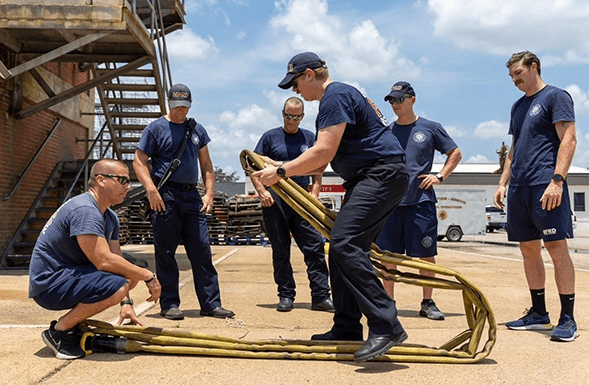


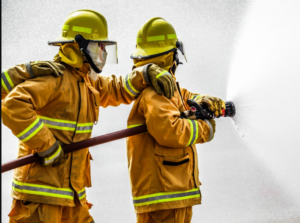
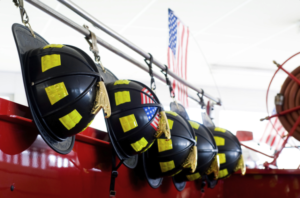


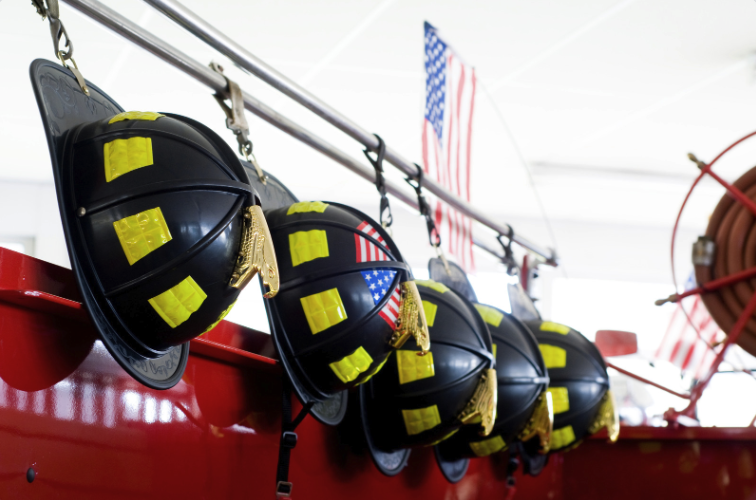

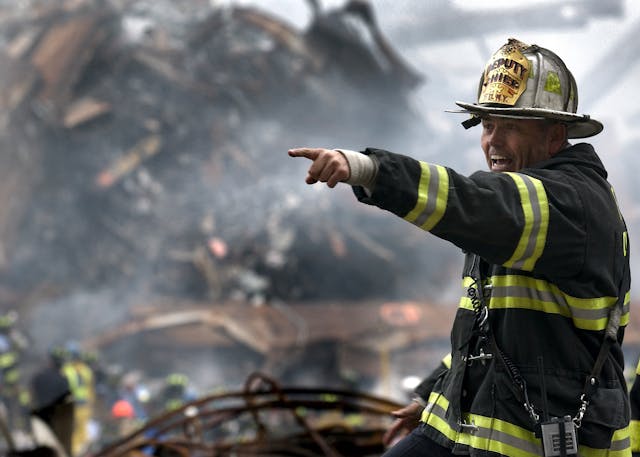
+ There are no comments
Add yours